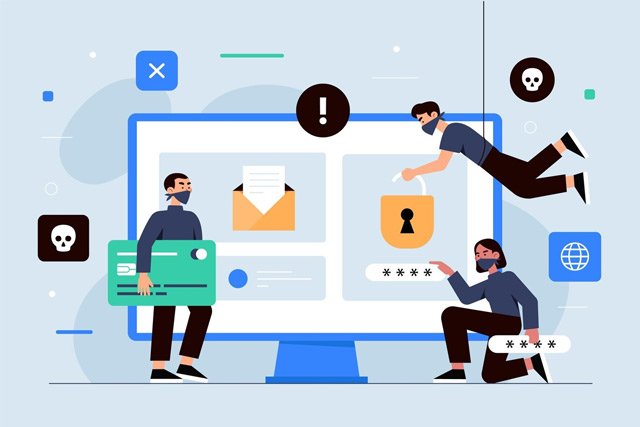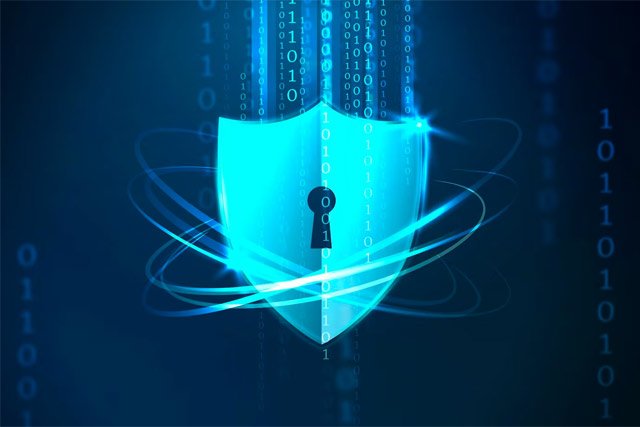In the relentless landscape of cyber threats, phishing is the preferred method for cybercriminals. This comprehensive guide explores the evolving realm of phishing attacks and introduces the SLAM method of cyber security—a practical approach to phishing detection. Additionally, it delves into advanced strategies and emphasizes the crucial role of continuous training in preventing phishing attacks.
1. The Persistent Threat of Phishing Attacks

As cyber threats evolve, phishing remains a go-to tactic for cybercriminals, posing severe company risks. From ransomware to credential theft, phishing remains a significant cybersecurity concern, emphasizing the need for robust detection methods.
1.1. The Dynamics of Phishing
Understanding phishing as a social engineering tactic is crucial. It involves tricking individuals into sharing data, granting system access, or taking actions for the scammer’s gain. Phishing extends beyond emails, encompassing text messages (smishing) and voice calls (vishing), with targeted variations like spear phishing and whaling.
2. The Imperative of Phishing Prevention Training

Phishing success hinges on exploiting human vulnerabilities, making prevention training a critical defense. This section underscores the need for comprehensive training that engages every level of an organization, from interns to CEOs. The SLAM method emerges as a practical tool for efficient and memorable phishing identification.
2.1. Ongoing Reinforcement for Lasting Vigilance
Acknowledging the perishable nature of cybersecurity skills, continuous reinforcement becomes essential. Studies reveal that skills diminish six months after initial phishing detection training. The SLAM method addresses this challenge by offering a method that is easy to understand and retain.
3. The SLAM Method: A Shield Against Phishing Threats

3.1. Unveiling SLAM: Sender, Links, Attachments, Message Text
The SLAM method serves as a mnemonic device encapsulating the four critical areas of an email that require scrutiny—Sender, Links, Attachments, and Message Text. This section provides an insightful exploration of each element, highlighting their significance in phishing prevention.
3.2. Customizing SLAM for Healthcare Dynamics
Recognizing the unique challenges faced by the healthcare sector, this subsection explores the nuances of applying the SLAM method within the industry. The protection of patient data becomes a focal point in healthcare-specific considerations.
4. Tactical Application of the SLAM Method: A Phishing Prevention Handbook

4.1. Checking the Sender (S): The Gateway to Legitimacy
- Verification protocols for authenticating sender emails.
- Scrutinizing email addresses for subtle alterations.
- I am recognizing legitimate companies through domain addresses.
4.2. Hovering Over Links (L): Navigating the Web of Trust
- Cautionary measures when clicking links.
- I recognize the urgency tactics employed by phishing emails.
- We are verifying the sender’s identity before clicking links from unknown sources.
4.3. Being Wary of Email Attachments (A): Balancing Trust and Caution
- The evolving nature of malicious attachments.
- Avoid opening unexpected or strange file attachments.
- Leveraging anti-virus/anti-malware applications for attachment scans.
4.4. Carefully Reading the Message (M): Scrutinizing Content for Authenticity
- Thoroughly read email content for potential red flags.
- It is identifying minor spelling or grammatical errors that may indicate a scam.
- Exercising caution before taking action in response to emails.
5. Responding to Phishing: A Proactive Defense Handbook

5.1. Reporting to IT Team: Swift Action for Defense
- Promptly reporting suspicious emails to the IT team.
- Leveraging IT expertise to verify email legitimacy and implement protective measures.
5.2. Handling Email Attachments: A Delicate Balance
- I am refraining from downloading unsolicited attachments.
- I am deleting suspicious attachments after reporting them to IT or cybersecurity personnel.
5.3. Clicking Links with Caution: Defending Against Urgency
- Avoid clicking links in emails, especially those with urgent requests.
- I am steering clear of replying to emails from unknown sources asking for personal information.
5.4. Changing Account Passwords: A Proactive Security Measure
- We are evaluating the frequency of phishing emails to determine the need for password changes.
- Regularly changing passwords with a mix of capitalization, numbers, and special characters.
- I am adhering to the IT team’s recommendations for password security.
5.5. Informing the Impersonated Company: Strengthening Collaborative Defense
- Directly reporting phishing emails to the company being impersonated.
- I am collaborating with cybersecurity experts when uncertain about the appropriate action.
5.6. Implementing Remediation Strategies: Proactive Defense Mechanisms
- Conducting comprehensive cybersecurity training for staff.
- I am simulating phishing attacks to enhance staff awareness and response capabilities.
- Implementing technical controls such as email filtering, spear-phishing protection, and machine learning models.
6. Advanced Strategies for Cyber security: Beyond the SLAM Method

6.1. Continuous Training and Simulation
- Establishing a culture of continuous cybersecurity training.
- I am simulating sophisticated phishing attacks to challenge and enhance response capabilities.
6.2. Advanced Technical Controls
- Elevating defenses with advanced email security techniques.
- Implementing zero-day attack detection, sandboxing of malicious emails, and cutting-edge machine learning models.
6.3. Collaborative Defense Ecosystem
- Forging alliances with industry peers and governmental agencies.
- Establishing a collaborative defense ecosystem to share threat intelligence.
Conclusion
In the intricate dance between technology and human behavior, cybersecurity resilience becomes the key to unlocking a harmonious and secure digital existence. Empower yourself, your colleagues, and your organization with the SLAM method—a simple yet powerful tool in the ongoing battle against cyber security threats. As we collectively strengthen our digital defenses, we pave the way for a secure and resilient future. Mastering cybersecurity is an ongoing journey, and with the proper knowledge and strategies, we can navigate the digital landscape with confidence and resilience.





